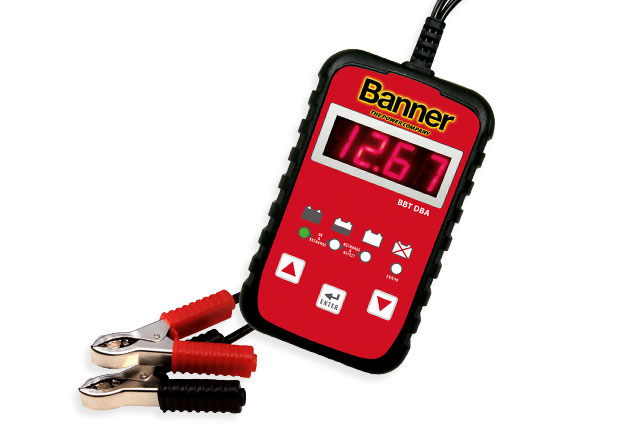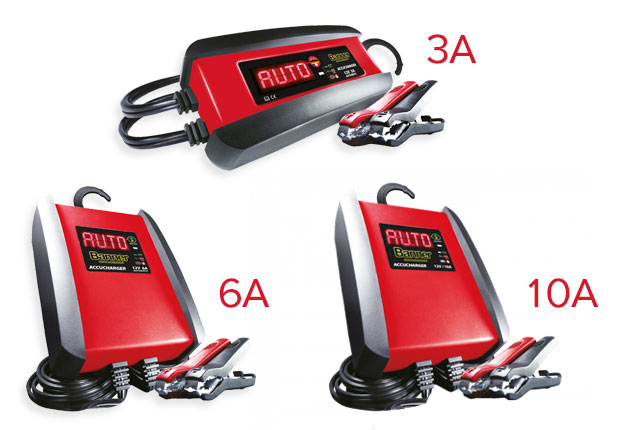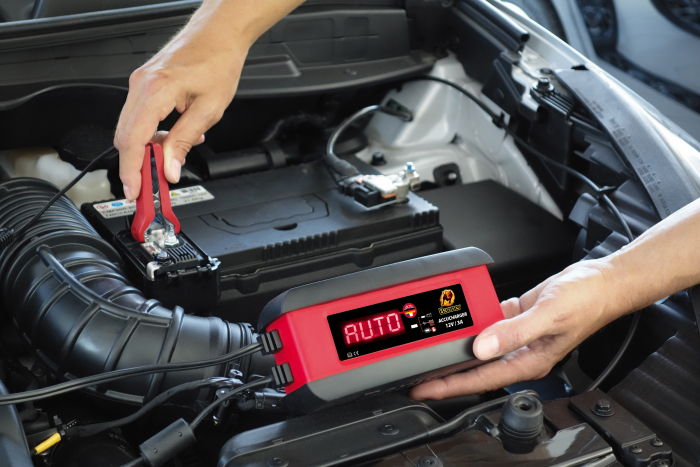CAMPING AND CARAVANNING
READY FOR THE NEW SEASON
All set for spring and summer.
So you have a camper bus, motor home or caravan and the big freeze is finally over. Banner now gives you valuable tips on how to dewinterise your vehicle and battery. Camping vehicles that have not been used during the winter months and have been wintering either outside or indoors will be ready to head off on the first trip in spring. If your vehicle has not been used for a long period of time (idle or overwintering period), it is essential to check your starter and electrical system battery. This is usually done using AGM technology.

For a long service life of a starter and on-board battery with AGM technology
It is essential that you check the open-circuit voltage with a battery tester or voltmeter. Please make sure to recharge the battery as soon as an off-load voltage limit of approx. 12.5 V has been reached. In order to be able to measure the open-circuit voltage with a tester, wait until approx. five hours after the end of charging or do not discharge for at least one hour.
An AGM battery should only be discharged to a maximum of 50% of its charge level.
In general, the deeper the discharge, the shorter the expected service life. An AGM battery can achieve up to 400 cycles at a discharge depth of 50% (approx. 12.3 V open-circuit voltage).
Banner charging tips for AGM batteries
- Only use direct current to charge the batteries.
- Battery disconnected or removed: Connect the positive terminal (+) of the battery to the charging terminal (+) of the charger and the negative terminal (-) to the negative terminal (-) of the charger.
- Battery not disconnected or not removed: Connect the positive terminal (+) of the battery to the charging terminal (+) of the charger and connect the negative terminal (-) of the charger to earth (= unpainted body, bare metal area).
- Do not switch on the charger until the battery has been connected. When charging is finished, switch off the charger first.
- We recommend a charging current of approx. one-tenth of the capacity (e.g. 60 Ah / 10 = 6 A charging current). With automatic chargers like the Banner Accucharger, this setting is performed automatically.
- If a temperature of +55 °C is exceeded, you must stop charging the battery.
- Ensure good ventilation when charging.
- The screw connections of the AGM batteries must not be opened. It is not possible or necessary to measure the acid density or top up with distilled water.
- Please note that 1.2 times the removed capacity must be recharged (e.g. removed capacity 30 Ah --> recharging 36 Ah).
- The battery is fully charged when the current drops to 0 or no longer decreases or the automatic charger switches off itself.
Caution: An explosive oxygen-hydrogen mix can form during charging. Fire, sparks, naked flames and smoking are prohibited.

Which charger do I need to use?
As a general rule, fully automatic chargers (charging voltage limited to 14.8 V) are well suited for charging the battery installed in a vehicle. These charging devices are fully automatic. Depending on the battery’’s capacity, you can use the following chargers, all with charge retention function:
- For batteries up to 72 Ah - Banner Accucharger 12V 3A
- For batteries up to 130 Ah - Banner Accucharger 12V 6A Recovery
- For batteries up to 230 Ah - Banner Accucharger 12V 10A Recovery
If you already have a charger, please take note of the following information:
Use the AGM setting, the charging voltage should be max. 14.8 V and the retention charging voltage should be set to 13.5 V. It would be best to use an IUoU characteristic with temperature compensation (if you have the option of adjusting it).
We also recommend the battery tester so that you can periodically check the battery voltage. BBT DBA - Digital Battery Analyser
By following these cast-iron tips, you and your vehicle with battery are guaranteed a successful new travel season, without any unplanned pit stops. Because next summer is definitely on its way.
You might also be interested in the following


